Talking about the body height sensor (1)
The body height sensor (English Chassis Height Sensor, also known as the axle height sensor, the attitude sensor, the suspension height sensor, etc.) is an essential component for measuring the change of the front and rear suspension posture of the vehicle. At present, the suspension control system of the automobile (such as the active suspension system, the suspension damping control system, the air suspension system, etc.), the headlight automatic adjustment system needs to measure the change of the driving posture of the vehicle through the sensor.
In recent years, the application of high-intensity discharge lamps (HIDs) in automobiles has become more and more popular. Compared with traditional halogen lamps, automotive headlamps using HID technology have a series of advantages of high brightness, long life and low power consumption. However, due to the high brightness of the HID, if the other auxiliary measures are not taken, it will cause the glare of the driver opposite the vehicle, and there is a serious safety hazard. Therefore, some countries and regions at home and abroad have formulated or revised relevant regulations for high-intensity headlights such as HID to avoid the negative impact caused by the use of HID headlights. Among them, the EU revised the ECE R48 regulations for HID lamps. China has also revised the original regulations and promulgated the "GB4785-2007 Installation Regulations for Exterior Lighting and Optical Signaling Devices for Automobiles and Trailers." "GB4785-2007" stipulates: "If the low beam uses a light source with a luminous flux exceeding 2000 lm, it must be equipped with a headlamp cleaning device, and the manual headlamp dimming mechanism defined in 4.3.2.6.2 is not applicable" [1]. Therefore, if a gas discharge lamp of 2000 lm or more is used, at least a headlight level automatic adjustment device must be provided. At the same time, regulations for the mandatory installation of headlight level automatic adjustment devices for LED headlights are also being formulated and are expected to be implemented in the next edition of the revised lighting regulations.
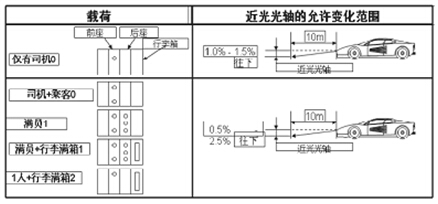
Figure 1 Mandatory requirements for the angle of illumination of low beam in GB4785-2007
The headlight level automatic adjustment device is composed of several parts: the control ECU, the headlight adjustment actuator and the sensor. The current mainstream technical solutions are as follows:
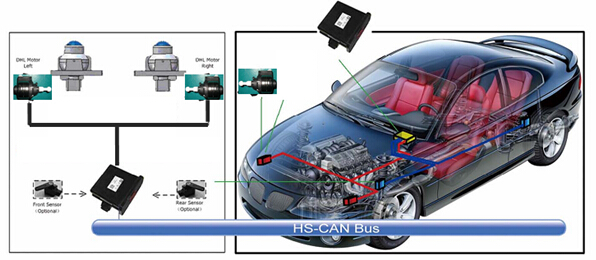
Figure 2 Auto headlight automatic adjustment system solution
As can be seen from the above figure, the body height sensor is an indispensable part of the headlight level automatic adjustment device, and one or two sensors are used per car. It can be seen that with the increasing popularity of HID headlights and LED headlights, the market demand for the body height sensor will be enormous.
At present, the method of measuring the height of the vehicle body is mainly measured by the mechanism shown in the following figure, wherein the lower swing arm of the automobile is connected with the rotating arm of an angle sensor through a four-link structure, and when the height of the vehicle body changes, the lower control arm is centered on the rotating shaft. Rotation occurs, and the four-bar linkage mechanism is driven to move. The swing arm of the angle sensor is rotated, and the output signal of the angle sensor changes, which indirectly reflects the change of the height of the vehicle body. Therefore, the change in the height of the vehicle body can be measured by using the rotation angle sensor and the four-bar linkage mechanism. In other words, the core of this body height sensor is an angle sensor.
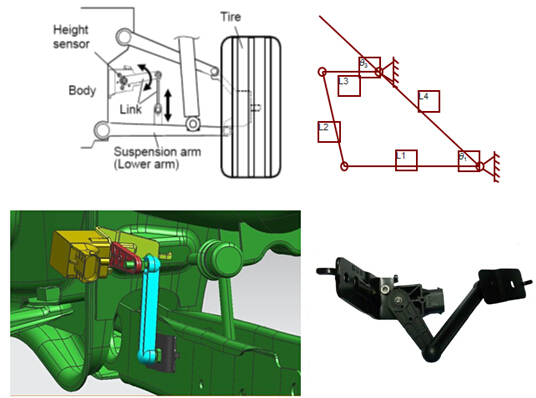
Figure 3 four-link body height sensor
Of course, another measurement method has appeared in recent years. Different from the above four-bar linkage structure, it adopts the principle of eddy current ranging, and can completely measure the change of the height of the vehicle body without contact. The installation diagram of the actual vehicle is shown in the figure below. The advantage of this measurement scheme is that the sensor is completely non-contact with the measured object, and the sensor has a longer life and higher reliability.
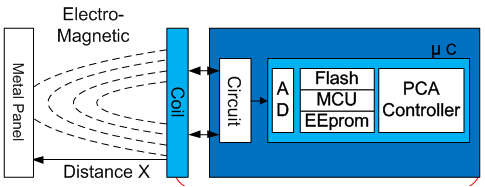
Schematic diagram of eddy current ranging principle 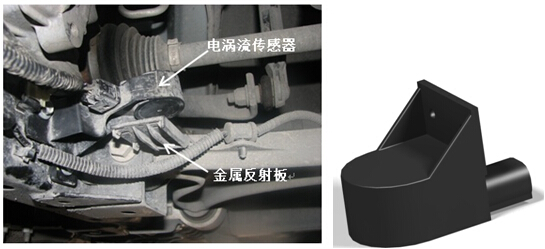
Figure 4 eddy current body height sensor
However, due to the complexity of the eddy current measurement technology, the development is difficult, and the cost of the sensor is also high. At present, the popularity in the vehicle is far less than that of the four-link measurement scheme.
The sensors used to measure the height of the car have been developed for generations, from the initial contact resistive diaphragm angle sensors to various non-contact angle sensors. Among them, the contact angle sensor has been eliminated due to shortcomings such as short life, low precision and poor anti-interference ability. At present, the mainstream non-contact sensors are divided into linear Hall type, magnetoresistive type, electromagnetic induction type, and differential Hall type.
The linear Hall type is the earliest non-contact sensor used in the measurement of the height of the car. It utilizes the characteristics that the output of the Hall element is proportional to the magnetic field. By designing a special magnetic circuit, it is ensured that the Hall is in a certain angle range. The magnetic field of the component is proportional to the angle of the shaft. At the same time, the appearance of the dedicated Hall ASIC enables the output to be programmed and linearly compensated within a certain range of angles, improving the accuracy of the measurement. However, since the linear Hall can only directly measure the magnetic field strength in one direction, the slight change of the magnetic field strength will cause the output to change. This requires high positioning accuracy when manufacturing the sensor, and the linearity of the magnetic field and the angle is ensured. At the same time, it is necessary to select a samarium-cobalt magnet with a small temperature coefficient in the automotive-grade operating temperature. These are not conducive to the improvement of sensor accuracy and cost control.
Reluctance type, electromagnetic induction type, and differential Hall type are emerging technologies in recent years. Because they use a differential processing method similar to the original measurement signal, the sensor is ensured while ensuring high measurement accuracy. The manufacturing process and the magnet material are not very high, and with the continuous development of IC technology, the cost and the linear Hall element are basically the same, and have a broad application prospect.
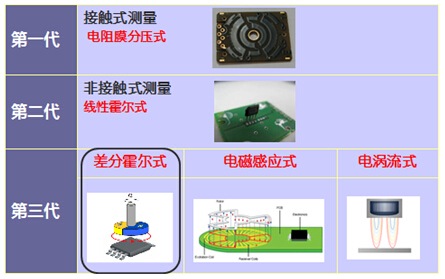
Figure 5 Comparison of several generations of body height sensor technology
The installation of the tunnel wall and wall-mounted installation of the same, there is no special place, and this wall-mounted tunnel lights can be installed on a wide range of tunnel space, installation methods are very simple, embedded circuit , The installation of the tunnel lights, then the lamp on the fixed, of course, which also need to install an electrical box, to provide power for the lamps.
Wall Hanging LED Tunnel Light,150W Wall Hanging LED Tunnel Light,Waterproof Wall Hanging LED Tunnel Light,Wall Mounting Outdoor LED Tunnel Light
Shenzhen Ri Yue Guang Hua Technology Co., Ltd. , https://www.ledlightinside.com